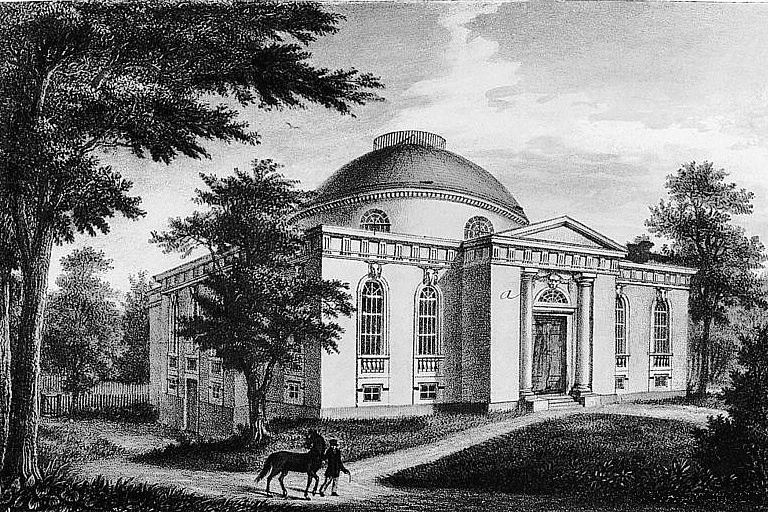The heart Campus Nord is an 80,000 square metre park-like area with old trees and historic red brick buildings, which were built between the end of the 18th and the middle of the 20th century. In 1787, King Friedrich Wilhelm II acquired the site of the baroque "Reuss Gardens" on the city boundary, including the pleasure garden and water features, in order to establish a veterinary school. Under the direction of Carl Gotthart Langhans, the architect of the Brandenburg Gate, a domed building, the Anatomical Theatre of the Royal Veterinary School and later the School of Veterinary Medicine, was built in the middle of the gardens. The Veterinary Anatomical Theatre, popularly known as the "Temple of Trichinosis", is the oldest surviving academic teaching building in Berlin.
In 1790, the Royal Veterinary School in Berlin was opened to train "horse doctors" for the Prussian cavalry and to combat rampant animal diseases such as rinderpest. The grounds housed paddocks and stables as well as a horse clinic and a horseshoe smithy.
With the founding of Berliner Universität in 1810, the Charité became a medical faculty where outstanding doctors and scientists such as Virchow, Helmholtz and Robert Koch researched and taught.
National Socialism
The history of Friedrich-Wilhelms-Universität and later Humboldt-Universität zu Berlin is closely interwoven with times of new beginnings, freedom and innovation. However, the history of Humboldt-Universität is also characterised by bondage to state power and involvement in injustice, racism, anti-Semitism and war crimes.
This also includes the scientific justification and derivation for the so-called "General Plan East". Between 1940 and 1943, Reichsführer SS Heinrich Himmler had a total of five variants for the forcible reorganisation of Eastern Europe drafted by academics at what was then Berliner Universität. Together they formed the "General Plan East" planning complex. The key figure in these plans was Konrad Meyer, a National Socialist, agricultural scientist and professor at the Berliner Universität.
GDR time
During the GDR era, Campus Nord was home to the Faculty of Medicine (Charité) and the Faculty of Agriculture and Horticulture. At Humboldt-Universität, teaching and research were increasingly subordinated to the political and economic goals of the Socialist Unity Party of Germany (SED). This was particularly evident in the splitting of the faculty into the Plant Production, Animal Production and Veterinary Medicine and Horticulture sections at the end of the 1960s, which was motivated by research policy.

1990 until today
After the fall of the Berlin Wall and German reunification, the educational structures in Berlin were reorganised, as the three Berlin universities, Humboldt-Universität, Freie Universität and Technische Universität, had many disciplines in common. In 1992, the Section of Agriculture/Veterinary Medicine at Humboldt-Universität was integrated into the Faculty of Veterinary Medicine at Freie Universität.
In 2003, Berlin's university medicine was reorganised. Charité merged with the Benjamin Franklin University Hospital of Freie Universität to form Charité - Universitätsmedizin Berlin, one of the largest hospitals in Europe.


